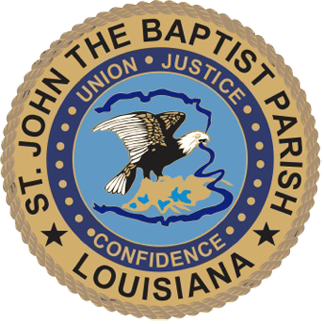Update: Caution after ameba detected in water for Reserve, Garyville, Mt Airy
Published 5:30 pm Wednesday, August 27, 2014
LAPLACE — The Louisiana Department of Health and Hospitals announced testing today confirmed the presence of the Naegleria fowleri ameba in the St. John Water District 1 water system.
This water system serves 12,577 people in Reserve, Garyville and Mt. Airy. There are no known cases of illness related to the ameba in St. John the Baptist Parish or elsewhere in the state currently, parish officials said.
The water system was sampled as part of DHH’s surveillance program that launched this month. During the ameba testing, DHH discovered the system was not in compliance with the State’s emergency rule, which requires water systems maintain a minimum disinfectant residual level of 0.5 milligrams per liter throughout all of their distribution lines. This 0.5 mg/L level is known to control the Naegleria fowleri ameba.
DHH has issued an emergency order requiring St. John Water District 1 to perform a free-chlorine burn (maintain 1.0 mg/l of free chlorine throughout the system for 60 days) to kill the amebae within the water system.
The water will remain safe to drink during this time. At the end of 60 days, DHH will sample the system again for presence of the ameba. In previous cases in Louisiana, this action has been effective in controlling the ameba, officials said.
St. John Water District 1 is the third water system in Louisiana to test positive for the ameba.
Once St. John Water District 1 begins the chlorine burn, residents served by this water system may notice a change in the smell and taste of the water throughout the chlorine burn. However, the water will remain safe to drink.
If residents are uncertain as to what water system they are served by, they should review their most recent water statement.
“We are working closely with the water system and parish officials to ensure that the chlorine levels are increased to a level that will reduce the risk of exposure to the ameba,” DHH Public Health Assistant Secretary J.T. Lane said. “Water from St. John Water District 1 remains safe to drink; however, we do have guidance for residents on steps they can take to reduce their risk.”
St. John the Baptist Parish President Natalie Robottom said residents in Reserve, Garyville and Mt. Airy are advised to take all recommended pre-cautions to avoid having water enter their nose.
“The parish Utilities Department is taking immediate actions to fully chlorinate the water system and eliminate the threat,” she said. “As more information becomes available, it will be released to the public.”
Louisiana State Health Officer Jimmy Guidry said families can take simple steps to protect themselves from exposure to this ameba, the most important being to avoid allowing water to go up your nose while bathing or swimming in a pool.
“It is important to remember that the water is safe to drink; the ameba cannot infect an individual through the stomach,” he said.
PRECAUTIONARY MEASURES FOR FAMILIES
According to the CDC, personal actions to reduce the risk of Naegleria fowleri infection should focus on limiting the amount of water going up a person’s nose and lowering the chances that Naegleria fowleri may be in the water. Preventative measures recommended by the CDC include the following:
• DO NOT allow water to go up your nose or sniff water into your nose when bathing, showering, washing your face, or swimming in small hard plastic/blow-up pools.
• DO NOT jump into or put your head under bathing water (bathtubs, small hard plastic/blow-up pools) – walk or lower yourself in.
• DO NOT allow children to play unsupervised with hoses or sprinklers, as they may accidentally squirt water up their nose. Avoid slip-n-slides or other activities where it is difficult to prevent water going up the nose.
• DO run bath and shower taps and hoses for five minutes before use to flush out the pipes. This is most important the first time you use the tap after the water utility raises the disinfectant level.
• DO keep small hard plastic/blow-up pools clean by emptying, scrubbing, and allowing them to dry after each use.
• DO use only boiled and cooled, distilled or sterile water for making sinus rinse solutions for neti pots or performing ritual ablutions.
• DO keep your swimming pool adequately disinfected before and during use. Adequate disinfection means:
• Pools: free chlorine at 1-3 parts per million (ppm) and pH 7.2-7.8, and
• Hot tubs/spas: free chlorine 2-4 parts per million (ppm) or free bromine 4-6 ppm and pH 7.2-7.8.
• If you need to top off the water in your swimming pool with tap water, place the hose directly into the skimmer box and ensure that the filter is running. Do not top off by placing the hose in the body of the pool.
Residents should continue these precautions until testing no longer confirms the presence of the ameba in the water system. Residents will be made aware when that occurs. For further information on preventative measures, please visit the CDC website here: http://www.cdc.gov/parasites/naegleria/prevention.html
FOR UPDATES
For more information on how to protect yourself and on the current status of testing, visit DHH’s Water Facts website at www.dhh.la.gov/WaterFacts. DHH launched the website to provide the public with accurate information about the ameba. DHH is also accepting questions from the public for using a form on this Website or via e-mail to DHHInfo@la.gov.






